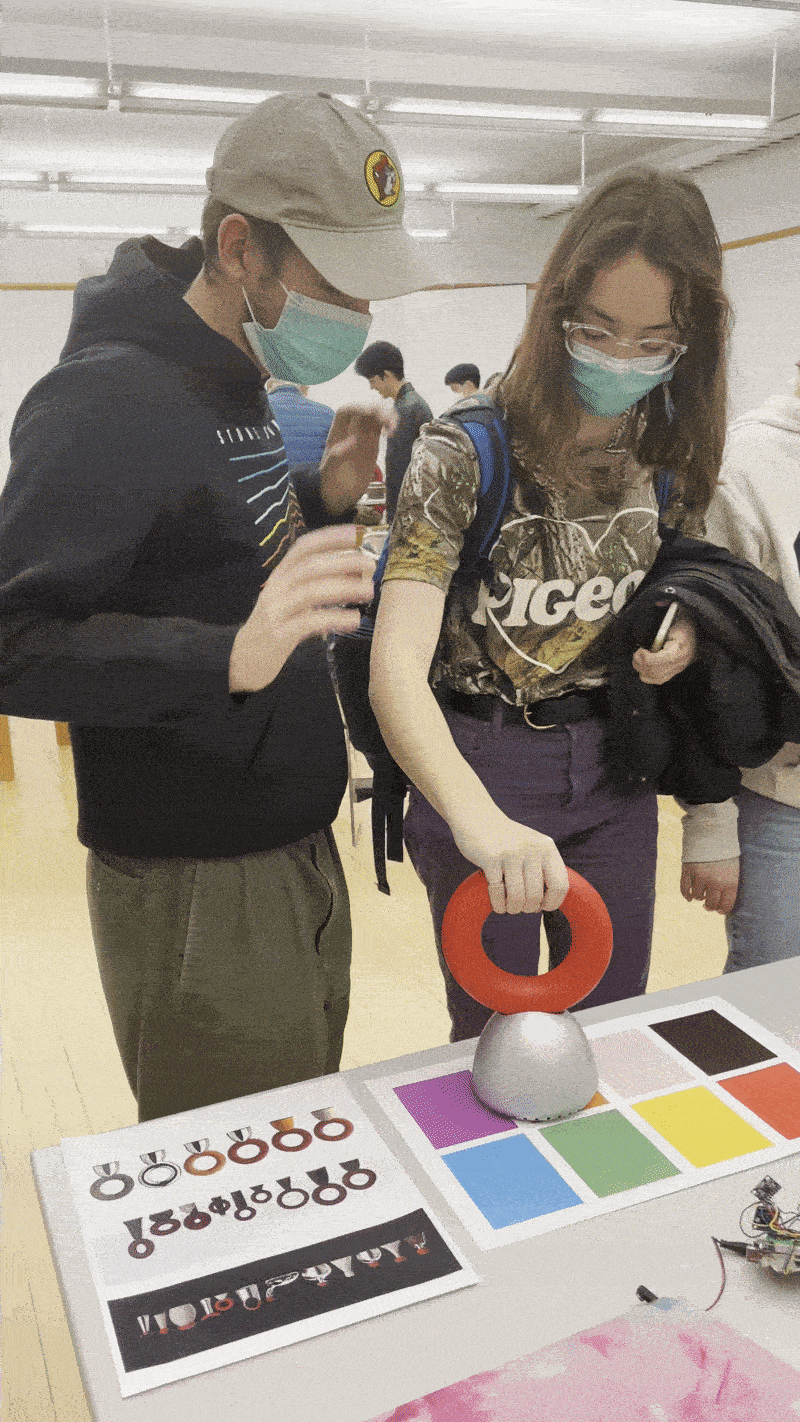Color Tune: Color-Sensing Radio 📻
Color Tune is a look into new paradigms of interaction that encourages the user to engage with their surroundings in a different way.
A fully functional radio concept that uses color to tune stations and rotation to adjust for volume transforms everyday objects into exciting music generators.
Skills and Tools
Keyshot
Solidworks
Physical Modelling
Arduino
Duration
4 weeks (Nov 2022 - Dec 2022)




CMF Exploration


What is a Radio?

I began by looking at existing radios for inspiration before diving into more exploratory forms and functions
As I was generating ideas, I relied a lot on sketching to see them come to life

How to use:

This idea is interesting, let's develop it!
Hmmm what if the radio was more playful?
Play? Color? This radio could detect color for stations!
_Page_1.png)

After deciding on the interaction, these sketches look deeper into the specific form by focusing on proportions and characteristics
Physical and Digital Modelling
I used a combination of physical and digital modeling to further explore and decide on form and interaction


I want to try out a variety of ideas but I don't know how I can make them efficiently...let's try Solidworks!
%20(1).jpg)
%20(1).png)
.png)
I like the simple geometry, the interaction will shine through. This radio needs to be approachable so softer shapes are good. It also needs to stand proud on a surface.
To fit all these, I chose the 8th design. From there I played with proportions and scale
I thought that I liked the original proportions but rounded out the base to create a softer silhouette.
Now I had to decide on CMF. This radio could be anything! But it needed to highlight the torus as its touchpoint and the base as the speaker/electronics.
Radio Fabrication Process
_Page_5.png)

_Page_3.png)
Pages from my sketchbook that I used to document the process and take notes
I sanded and applied alternating layers of primer and body putty to produce a smooth surface on PLA filament
I printed the base with SLA resin, further sanding was done to create a seamless fit between the handle and base





Red soft rubber for grip and matte finish
Aluminum for light weight and durability
CMF
PET for recycling and cost
Electronics Prototyping
List of electronic components I used:



Arduino Uno

Audio Amplifier
FM Radio Tuner
.jpeg)
GY521 gyroscope
(detecting rotation angle)
Mini Speaker
.jpeg)
TCS34725 RGB sensor
(detecting color)

Color sensor
and gyroscope
FM Radio Tuner
Amplifier
Arduino & Breadboard
9V battery
Speaker
3ft Wire Antennae

Demonstration @ Design Showcase
I documented some of my peers' interactions and reactions to the radio at our final design showcase.
For demonstration purposes, I had also printed out a grid with different colors.



Reflection and Thoughts
I thought that this project was challenging because I had to imagine a form that did not exist. However, the most fun I had was also playing with different shapes in Solidworks.
As a physical computing minor, I had learned these skills before but never had a chance to actually use them. So I was also excited to combine my electronics and coding skills with my design projects.
If I could progress with this project, I would work on physical prototyping as I believe there are better ways to make the model. This would include perhaps a screw on base lid, or better split lines.

